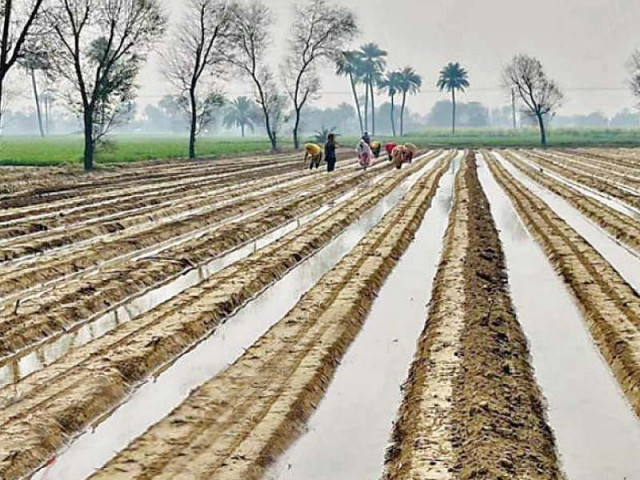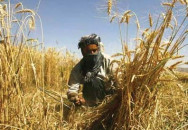A charter of economic reforms
Reform process can take many years but a start has to be made immediately

Pakistan’s current economic framework is not working and needs a serious reappraisal. This is the general feeling among economic experts and common people alike.
Various business associations, particularly the chambers of commerce and industries, are taking an initiative to find a minimum set of economic reforms that can be agreed upon by all the stakeholders and on which work can be continued irrespective of any future change of government.
For this purpose, they are seeking expert opinions and trying to gain the support of major political parties for signing a charter of economic reforms. In response to this challenge, many commentators are putting forward their proposals. This article is another such effort and focuses on three areas of reform priorities.
Several other countries have managed to overcome their economic crises through such reforms. Pakistan can do so likewise.
Pakistan’s major economic problem stems from its stagnant exports. Whereas Pakistan’s share in global exports has been declining by 1.5% on average every year for the past 15 years, the competing countries have been increasing theirs.
Pakistan’s policymakers try to restrict imports to keep trade deficit in check, but this weakens the economic growth. Open trade is a sure way for reducing poverty and achieving economic growth.
Through reforming trade policies, we have seen hundreds of millions being lifted out of poverty in our own neighbourhood.
The second most significant obstacle to growth is the low literacy rate. In a recent article in this paper, Charlie Robertson, an international economist, made some very pertinent remarks about Pakistan’s literacy problem.
According to him: “No illiterate country has ever achieved prosperity…70-80% literacy is required to industrialise.”
The literacy rate of other South Asian countries, such as India and Bangladesh, is over 75%. In comparison, ours is 62%. It will take us at least 10 years to get where our neighbours are today.
Sadly, Pakistan is making no effort to catch up. According to the 2021-22 Economic Survey, the spending (both federal and provincial) on education at 1.77% of GDP is not even half that of the global average.
The third most significant problem is the ‘elite capture’, which implies the diversion of public resources for the benefit of a few individuals, institutions or corporations (including state-owned enterprises). According to a 2021 UNDP report, the economic privileges of Pakistan’s elite groups are about $17.4 billion. Thus, equivalent to 40% of the country’s total revenue of $43 billion goes to less than 1% who comprises such elite groups.
This severely limits the ability of ordinary people to access resources and increase their incomes. Many developing countries have been through similar problems but have managed to largely overcome them. There is no reason why Pakistan cannot achieve similar success if policies are right. Here is the suggested way forward for the three areas.
To boost exports, we will have to end our isolation and increase global and regional integration. It will require domestic reforms of taxation and trade policies.
In particular, we need to let international trade flow and not stifle it by collecting almost 50% of total taxes from that source compared to global average of less than 5%.
Export of services has a major potential. Recently, IT exports have been surging by almost 25% annually. If this momentum continues over the next five years, there is no reason we should not be able to reach exports of $10 billion from the current $2.6 billion. Secondly, to bring the literacy rate to the same level as other regional countries, the current dismal funding will have to be at least doubled. Most of the new budget allocation should go towards upgrading technical education and skills building.
Any funding increase must be seen as an essential investment towards solving other problems such as unsustainable population growth, low technical skills and absence of high value-added exports.
Pakistan can significantly reduce the elite capture by eliminating exceptions granted through various policy mechanisms such as SROs. There is a need to end all schemes for the allotment of land to the elite, subsidies to some sectors and tax exemption/ protection to the powerful.
All incomes beyond a certain threshold, whether from agriculture or any other source, must be taxed. Similarly, a level playing field should be given to all industrial sectors and economic activities. There should be greater reliance on market forces rather than regulations.
Agreeing on a charter of economic reforms is a great initiative and deserves full support of all sections of society. The reform process can take many years and multiple governments. But a start has to be made immediately, and work on it continued for several years.
If we look at any prosperous developing country, in each case, the reforms were initiated when the countries faced severe economic problems, as Pakistan is doing now. In the case of Turkey and China, 1980 was the turning point, while for India, it was 1992. Let 2022 be the year of change for Pakistan’s economic fortunes.
The writer has served as Pakistan’s ambassador to WTO and FAO’s representative to the United Nations in Genevav
Published in The Express Tribune, August 15th, 2022.
Like Business on Facebook, follow @TribuneBiz on Twitter to stay informed and join in the conversation.



















COMMENTS
Comments are moderated and generally will be posted if they are on-topic and not abusive.
For more information, please see our Comments FAQ